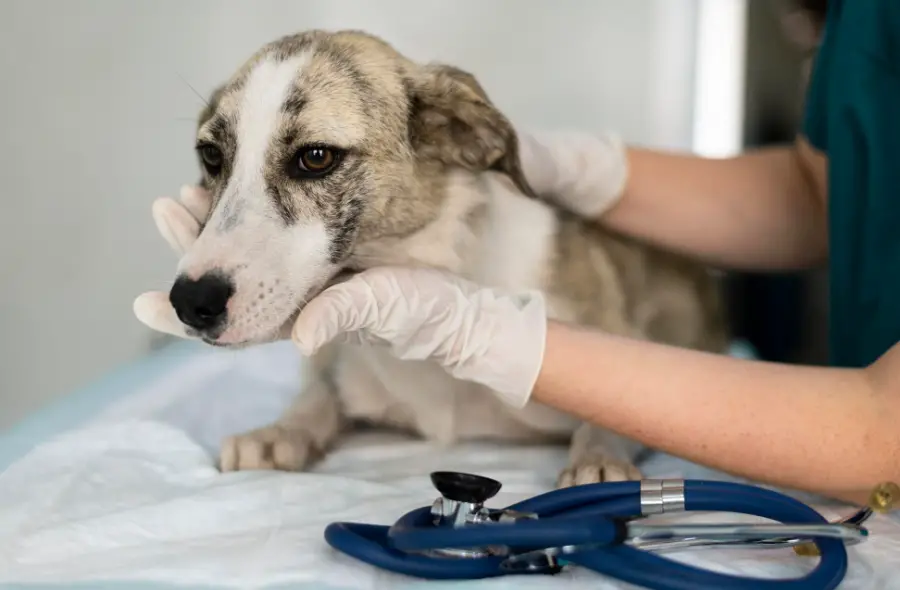Introduction: An Unexpected Discovery After a Routine Trip
Coming home from a two-week work trip, you were likely excited to reunite with your dog, who had been staying in the trusted care of a 24/7 daycare facility. But what should have been a heartwarming reunion quickly turned into a moment of confusion and concern when you noticed something unexpected: a small blue tattoo on your dog’s stomach.
The sight of a tattoo—especially one you didn’t authorize—can be alarming for any pet owner. Questions immediately arise: Why is it there? Was it done without consent? Does it have medical or legal significance?
Before jumping to conclusions, it’s important to carefully evaluate the possibilities, understand standard veterinary practices, and know the proper steps to take to protect both your pet and yourself.
Pet Tattoos Explained: Why They Exist
Pet tattoos are not as rare as they might seem. Long before microchipping became standard, tattoos were commonly used to identify pets and prevent mistakes during medical procedures. Even today, veterinarians sometimes use tattoos for very specific reasons.
-
Spay/Neuter Indicators
One of the most common uses of tattoos is to mark that an animal has been spayed or neutered. Typically, this is a small blue or green line or symbol placed on the stomach near the surgical site. The purpose is practical: it prevents unnecessary exploratory surgery later in life. -
Identification Purposes
Some breeders, shelters, or veterinary clinics may tattoo a number or symbol to identify a pet, especially in cases where microchips are not available. These identifiers are permanent and can be registered in certain databases. -
Medical or Research Indicators
In rare cases, tattoos may be used in medical research animals or shelter environments for tracking purposes. However, these uses are usually documented and disclosed.
While tattoos themselves are not harmful when performed by licensed professionals, the main concern arises when they are applied without the owner’s knowledge or consent.
The Role of 24/7 Daycare Facilities
Modern pet daycare and boarding facilities often provide much more than just a safe place to sleep. Many now include grooming services, exercise programs, training, and even partnerships with veterinary clinics for wellness checks.
If your daycare facility has a veterinary partner or an on-site vet, it’s important to clarify exactly what services they are authorized to perform. A spay/neuter tattoo should never be added unless the dog has undergone surgery—and that requires explicit, signed consent from the owner.
This is why investigating the scope of services offered by the facility is crucial. Was your dog taken for grooming or veterinary care while you were away? Was there an emergency that required intervention? These questions can help narrow down the possibilities.
Decoding the Blue Tattoo: What It Could Mean
The color and placement of the tattoo can provide valuable context.
-
Blue or Green Tattoos on the Stomach: Usually indicate sterilization (spayed/neutered).
-
Numbers or Letters: Can be part of an identification system used by breeders, shelters, or rescue organizations.
-
Unique Symbols: Occasionally shelters use small marks to indicate medical treatments or ownership records.
If your dog has already been spayed or neutered, it’s possible that this tattoo was applied long ago during surgery but simply went unnoticed until now. However, if the tattoo appeared during her stay at the daycare, that raises more serious questions.
Possible Explanations for the Tattoo
-
Spay/Neuter Confirmation – If the facility partnered with a vet who performed surgery, the tattoo may have been added afterward.
-
Identification Mistake – It’s possible, though concerning, that your dog was mistakenly tattooed as part of an identification process intended for another animal.
-
Unauthorized Procedure – In the worst-case scenario, a procedure may have been performed without your knowledge or consent, which is a serious legal and ethical issue.
Steps to Take Immediately
Before confronting the daycare facility, it’s best to gather information and prepare:
-
Review Your Dog’s Medical Records – Check if your vet previously noted a tattoo.
-
Take Clear Photos – Document the tattoo’s size, shape, and location.
-
Contact Your Veterinarian – Ask them to examine the tattoo and confirm its meaning. Vets are trained to recognize common spay/neuter markers and other identifiers.
Questions to Ask the Daycare Facility
Once you’ve gathered some information, it’s time to contact the daycare. Be direct but professional:
-
Did my dog receive any medical treatment while in your care?
-
Do you have a policy regarding pet tattoos or identification procedures?
-
Was my dog transported to a vet during her stay? If so, why, and what procedures were authorized?
-
Can you provide all records of my dog’s care during the two-week period?
Document all responses carefully. If their answers are vague, dismissive, or inconsistent, it may be necessary to escalate the situation.
Legal and Ethical Considerations
Pet owners must provide informed consent for any permanent alteration to their animals. Applying a tattoo without consent could raise serious ethical and legal concerns. Depending on local laws, this could even be classified as malpractice or unauthorized veterinary care.
If you believe the tattoo was applied without permission, you may wish to consult both your veterinarian and an attorney to explore possible actions.
Community Experiences: You’re Not Alone
Many pet owners have shared similar stories of unexpected tattoos on their pets, often discovering that these marks were standard sterilization indicators. Online forums, local pet groups, and veterinary resources can provide reassurance and help you compare your experience with others.
Conclusion: Protecting Your Pet’s Future
Discovering an unexplained tattoo on your dog’s stomach can be unsettling, but it’s not always a sign of wrongdoing. The most likely explanation is a spay/neuter tattoo, but until you confirm with your vet and the daycare facility, you won’t have peace of mind.
By gathering evidence, asking clear questions, and understanding the possible reasons behind pet tattoos, you’ll be better equipped to protect your dog’s well-being and hold the facility accountable if necessary.
Your pet’s health and safety always come first, and as a responsible owner, being proactive ensures no one makes decisions about your dog without your knowledge again.

Adrian Hawthorne is a celebrated author and dedicated archivist who finds inspiration in the hidden stories of the past. Educated at Oxford, he now works at the National Archives, where preserving history fuels his evocative writing. Balancing archival precision with creative storytelling, Adrian founded the Hawthorne Institute of Literary Arts to mentor emerging writers and honor the timeless art of narrative.
